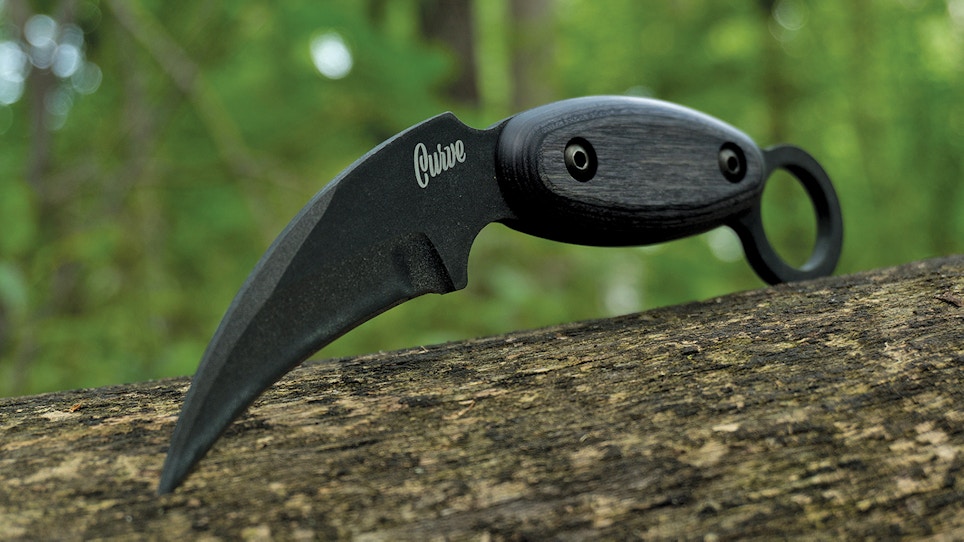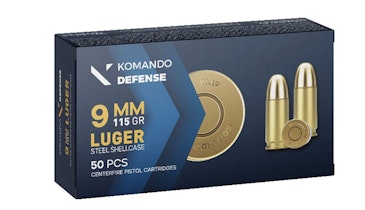Arguably one of the oldest tools in human history, the fixed-blade knife remains one of the most popular. Whereas early fixed-blade knives may have been nothing more than a sharpened piece of wood or stone or metal — useful but crude — today’s fixed-blade knives are technological marvels, able to be produced inexpensively for virtually any cutting task you can think of. Hand-made knives have their place, not only as useful tools but also works of art — albeit relatively expensive ones. But knives manufactured in today’s factories make it possible and even advantageous to own multiple knives for multiple uses.
Prices
Knife prices can run the gamut from a few dollars for a souvenir knife to several hundred dollars for knives worthy of being used by members of Special Forces or elite tactical units. It’s the area in between these two extremes that deserves special attention, since most knife buyers, including most of those who serve in the police and military, are probably comfortable with spending $50 to $150 for the right tool. As such, while many knives can do double or even triple duty, at this price point it’s not out of the question for a buyer to acquire two or three more specialized knives as opposed to just one to do everything. The key is to know what potential buyers want by asking good questions about their actual needs.
Generally, fixed-blade knives are considered superior in durability to folding knives because they are composed of a single piece of metal from blade to handle, as opposed to a blade that swings on the hinge of a handle. Fixed-blade knives are not usually pocketable like a folding knife. Yes, there are some folding knives that are more durable than some fixed-blade knives, but those are the exceptions.
Asking the Right Questions
Years ago, fixed-blade knives generally were characterized as larger hunting or survival knives — a traditional Bowie or a KA-BAR, often carried in a leather sheath, and used almost exclusively for hunting and survival. While these still exist and have their place, more recently, fixed-blade knives have morphed into other forms: smaller, more utilitarian, lighter, more maneuverable. So the first questions to ask your potential buyer: Why do you want a fixed-blade knife? What problems will this tool help solve?
Fixed-Blades and Handles
Since a fixed blade means the blade and the handle are all a part of the same piece of metal (or, in rare cases, another material), it can be tough to differentiate between them. But the handle will usually include a wood or plastic or rubber or metal grip that is wrapped around or attached to the metal underneath. In some cases, the handle may be composed of paracord or some other type of rope that may be useful. Ask: How do you anticipate carrying and deploying this knife? Is there a chance your hands may be wet? Does your hand fit this or that knife?
Blade Shapes and Types
Blade shapes are myriad, as are the types of metal they’re made from. You should be familiar with the differences between blade shapes such as drop, clip, tanto, hawkbill, sheepsfoot, spear and so on, as well as the strengths and weaknesses of blade metals sourced from Japan, Taiwan, Germany, the U.S., China, and more. Keep in mind that the buyer’s budget and actual use are key in determining which shapes and metals are appropriate. A $50 drop point blade made in China may be just right for some. Ask: How much is your overall budget? How many knives do you need? What does your actual use of this knife look like?
Sheaths
Most fixed-blade knives come with a sheath. In many cases, the sheath will be made from a durable plastic. Some may be made from leather. Virtually all will have some means of attaching to a belt or a backpack, offer multiple mount positions, and provide adjustable tension for an easier or more deliberate draw stroke. Many will have a drain hole and also include a distinct place for a thumb to press against, creating additional leverage when drawing. Ask: Where do you intend to carry your knife — on your person or in some other location? Which hand will you typically draw with? Will the knife/sheath be concealed or out in the open?
Know Your Categories
Fixed-blade knives may be organized into categories, and, while there is overlap from one category to another, it’s always better to emphasize that knives perform best at the function for which they are designed. While some potential buyers may be looking for a do-everything fixed-blade knife, ask them about their actual uses in rank order. This will help prioritize the key reasons for buying a knife in the first place.
● Knives designed for personal protection may emphasize stealth by being smaller, skinnier and lighter in weight than others. The knife may offer additional purchase (grip quality) by providing a finger hole or a curved and knurled section for a finger. It’ll likely have a sheath that provides it with the ability to be carried on a belt or even around the neck using a chain.
● Knives designed for basic utility will also be lighter in weight, with metal that’s able to be made as sharp as a razor, and offer more handle than blade, providing maximum leverage to the user.
● Knives designed for hunting will be eminently durable and offer a simple straight edge or a gut hook or other features meant to help with dressing game.
● Knives designed for survival often feature high durability, darkened blades and knurled handles meant to provide great purchase in any conditions or weather. The blade and sheath may provide other useful tools such as a saw or sharpening stone.
Fixed-blade knives for tactical users probably fall into the personal protection and basic utility categories, with an emphasis on the latter. As you talk with your potential buyer, find out what their realistic needs are — emergency cutting of seatbelts or wire on the scene of an accident is a different kind of cutting than other situations where a lighter, finer blade would be more appropriate. This is where a multi-knife sale may be the greatest help — a potential buyer with two distinct blade uses needs two distinct tools.
Test Drives
Have a few sample knives available for potential buyers to hold, feel and use. Show, where appropriate, how a blade cuts through wire or metal, how a blade deploys from its sheath, how it sharpens, and so on. Show how durable and functional the sheaths are, let them try one on for size and fit, and demonstrate how safely and securely it rides on a belt.
Accessories
Sales of fixed-blade knives, folding knives or any blade provides an opportunity for accessory sales as well. Blades will need sharpening, so a sharpening tool or kit (one for quick adjustments on the road and one for more in-depth sharpening) may be useful. Some knife manufacturers offer additional attachment options such as belt loops or clips.
Finally, selling a fixed-blade knife is an opportunity to sell a folding knife, and vice versa. The folding knife can be carried along with a fixed-blade knife when on duty, and the folding knife can of course be carried when not on duty (if only one knife is needed for off duty).
Keep these selling tips in mind and you’ll be a cut above when it comes to providing potential buyers with fixed-blade knives and more.






